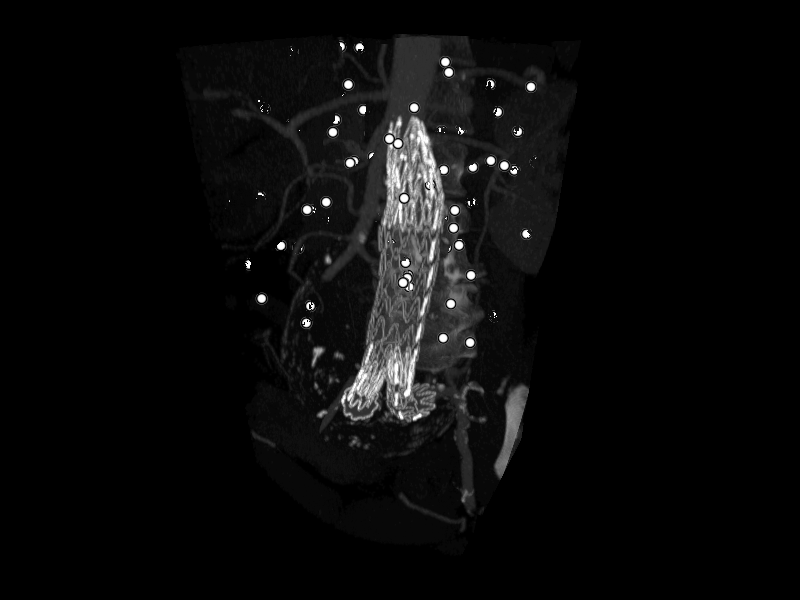Note
Go to the end to download the full example code.
Clipping planes with volume and markers#
Controls: - x/y/z/o - add new clipping plane with normal along x/y/z or [1,1,1] oblique axis - r - remove a clipping plane

import numpy as np
from vispy import app, scene, io
from vispy.visuals.filters.clipping_planes import PlanesClipper
# Prepare canvas
canvas = scene.SceneCanvas(keys='interactive', size=(800, 600), show=True)
# Set up a viewbox to display the image with interactive pan/zoom
view = canvas.central_widget.add_view()
# Create the visuals
vol = np.load(io.load_data_file('volume/stent.npz'))['arr_0']
volume = scene.visuals.Volume(vol, parent=view.scene, threshold=0.225)
np.random.seed(1)
points = np.random.rand(100, 3) * (128, 128, 128)
markers = scene.visuals.Markers(pos=points, parent=view.scene)
# add a transform to markers, to show clipping is in scene coordinates
markers.transform = scene.STTransform(translate=(0, 0, 128))
# Create the clipping planes filter for the markers (Volume has its own clipping logic)
clipper = PlanesClipper()
# and attach it to the markers
markers.attach(clipper)
# Create and set the camera
fov = 60.
cam = scene.cameras.TurntableCamera(
parent=view.scene,
fov=fov,
name='Turntable'
)
view.camera = cam
# since volume data is in 'zyx' coordinates, we have to reverse the coordinates
# we use as a center
volume_center = (np.array(vol.shape) / 2)[::-1]
# clipping planes around the origin
clip_modes = {
'x': np.array([[volume_center, [1, 0, 0]]]),
'y': np.array([[volume_center, [0, 1, 0]]]),
'z': np.array([[volume_center, [0, 0, 1]]]),
'o': np.array([[volume_center, [1, 1, 1]]]),
}
def add_clip(mode):
if mode not in clip_modes:
return
clipping_planes = np.concatenate([volume.clipping_planes, clip_modes[mode]])
volume.clipping_planes = clipping_planes
clipper.clipping_planes = clipping_planes
def remove_clip():
if volume.clipping_planes.shape[0] > 0:
volume.clipping_planes = volume.clipping_planes[:-1]
clipper.clipping_planes = clipper.clipping_planes[:-1]
# Implement key presses
@canvas.events.key_press.connect
def on_key_press(event):
if event.text in 'xyzo':
add_clip(event.text)
elif event.text == 'r':
remove_clip()
if __name__ == '__main__':
print(__doc__)
app.run()
Total running time of the script: (0 minutes 1.530 seconds)
